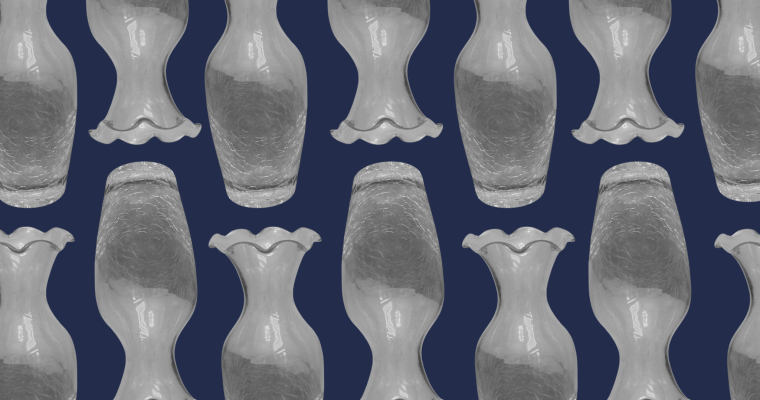To me, the Boston Museum of Science is synonymous with childhood. My dad was a member there for years and for a while, we’d visit any time there was a new exhibition opening. It was a fantastic place to visit as a kid and kept my younger brothers and I occupied for hours while my parents, STEM people themselves, could enjoy the subject matter and share things that interested them with us. I loved it there and have many fond memories.
One of those fond memories is, of course, seeing IMAX movies at the Mugar Omni Theater. And a significant part of that was the iconic sound test played at the beginning of every movie. Performed by Leonard Nimoy of Star Trek fame, it was a multisensory, ritualistic experience in which the IMAX screen became transparent and colored lights showed the mechanics of the theater. Nimoy, in his recognizably deep voice, had a conversation with our narrator before reading a series of whimsical sayings. If you never got to experience the joy of hearing this intro, I’ve transcribed it below.
Leonard Nimoy: This is a test of the Mugar Omni Theater Sound System.
Narrator: Leonard Nimoy! Wow! He’s Spock, from Star Trek.
LN: He grew up three blocks from here.
N: Ahhh, alright.
LN: Who put the bomp, in the bomp, shabomp, shabomp. Who put the ram, in the ram, alam, a ding dong.
N: Very cool! Now, let’s show ‘em what we got!
(At this point, the “bomp” and “ram” phrases were replayed, overlapping over each other. They got faster in speed and higher in pitch, reverberating around the space in a chaotic, warped manner).
N: OH, WOW! Ahem. Thank you, Leonard.
I do feel I need to say that the transcription doesn’t do it justice. For a slightly more authentic experience, you can listen to the intro here, though it can’t ever capture the surreal feeling of watching the domed screen expose its skeleton as an omniscient Nimoy spoke from the ether. So when I roped friends into going to the museum with me recently, I insisted that we buy tickets to see an IMAX show. I needed to hear Leonard Nimoy’s booming voice, a sonorous relic of my childhood.
We bought tickets to see Deep Sky, which chronicles the launch of the James Webb Space Telescope and its quest to explore the furthest reaches of space. This felt like the perfect show to see—space movies feel quintessentially Mugar Omni, primed to be otherworldly and immersive when projected on the domed screen. And, of course, this provided a perfect backdrop against which Spock himself could consecrate this temple of scientific exploration.
As we sat in our seats, leaning back to stare at the dome above, I could barely contain my excitement. When the lights dimmed and the theater rules played on the screen, I was practically bouncing up and down. Then, on the screen, a giant match struck, and the intro sequence began. The screen was filled with a huge, moving colored eye before becoming a canopy of trees. I kept my eyes glued to the screen—any second now, that booming voice would ring out!
But it never came. Or, rather, it did, briefly, and quickly enough that if someone had coughed behind me, I might have missed it. Amidst the overstimulating, colorful images that played across the screen, we heard Leonard Nimoy’s voice say a singular line: “This is a test of the Mugar Omni Theater sound system.” And then the inspirational classical music swelled and all that was left was a sense of confusion and a general feeling of unresolvedness.
It may seem like an exaggeration, but this introduction was not just beloved to myself, but to entire generations of science museumgoers. My close friend remembers attending years of IMAX screenings and excitedly quoted Nimoy’s “ram, alam, a ding dong,” when I brought this up. With some light googling, I also found a Buzzfeed article written in 2015 by Katie Notopolous and Julia Furlan that details the authors’ own personal love and nostalgia for this introduction. Reddit, too, is home to several threads about Nimoy’s voice at the museum, especially in relation to the museum’s 2021 announcement that it would be building a tribute statue to Nimoy at Science Park.
On one thread, in response to the article about the statue, one user asked if Nimoy’s intro was still used. Another user responded that “[the museum] renovated the Omni during COVID to convert from analog to digital. The intro is no more.” Another user responded to say that the museum had made an announcement that the introduction was to return, but despite scouring through years of pandemic-era posts, I could not find the post they referenced. I did find a 2021 post that announced the memorial, and in a corresponding press release, the museum states that Nimoy’s intro film “continues to welcome millions of audience members.”
And yet, despite this, when I visited, all that was left of this beloved intro was a short, jarring reminder of the explosion of light and sound that used to be. It isn’t clear to me if the full intro is played for other movies, and this was just an outlier, which I would love to believe. But I have a sinking suspicion that the original intro is gone. Perhaps when the museum says that Nimoy “continues to welcome” visitors, they simply mean the shortened phrase within the new introduction.
And this is sad. The original Nimoy introduction was a perfect example of all that the Science Museum was and still is—an incredibly immersive, mind-blowing scientific experience for the museum’s largely child audience. Sitting in that theater, though perhaps knowing I was destined to be an historian and not a scientist, I felt like a part of something bigger. I felt like I was getting a behind-the-scenes look at how this theater functioned, that I was getting to be the sound and lighting engineer for that space. I could connect with my electrical engineer father as he excitedly pointed out the speakers and wiring, despite both of us knowing I was more of a reader than a mathematician.
Aside from introducing whichever educational film would be playing, Nimoy’s intro gave visitors a kind of meta-understanding of not only the content of the film, but the mechanics behind it. Simply through his nonsensical “bomp”-ing and “romp”-ing, Nimoy was telling me that I was worthy of exploration and understanding—I was not only allowed to think about how things worked but was encouraged to. This, I would argue, is what the museum does so well—it goes beyond the surface-level interpretation of a topic and gives visitors the nuts and bolts of the how and why.
And because of this, I argue that Nimoy’s introduction is as much a part of the museum’s collection as any of the fossils or models it holds. Nimoy, a Boston community member himself, and someone who sparked the love of science and space exploration through his acting, was a quintessential part of any MoS visit. In its 2015 tribute to Nimoy after his passing, the museum notes that since the Nimoy introduction premiered in 1988, it welcomed over 15 million visitors to IMAX shows. As Katie Notopolous and Julia Furlan note in their Buzzfeed article, it gave New England visitors a sense of importance because someone from Boston who had done meaningful things was talking about growing up nearby—it made our origins feel relevant.
Not only is Nimoy a part of Boston history, but his introduction is a piece of museum history. It shows how focused on intellectual inquiry the museum has been from the beginning. It provides an intersection between science, engineering, history, and popular culture, creating an experience that clearly lives on in the Boston and New England educational canon. It created quasi-spiritual experiences for millions of visitors who felt his voice around them. And, to put it frankly, it’s really flipping cool.
So, Museum of Science, if you’re reading this, please bring back the Leonard Nimoy Mugar Omni Theater sound test. The memorial statue to Nimoy is an excellent idea, and I look forward to seeing it, but please also remember the museum’s original Nimoy connection. Preserve his voice and legacy as a symbol not only of his impact and contribution to the Boston community, but as a reminder of the collective memory of so many Bostonians. Let Nimoy’s voice ring out once again from hidden speakers, returning the theater to its original glory. Please don’t let it die as a sometimes-viewed YouTube video or a one-liner in an overstimulating color storm.
Sources:
Meaghan Agnew and Remy Frisch. “Leonard Nimoy’s Family Team with the Museum of Science to Establish a ‘Live Long and Prosper’ Vulcan Salute Monument.” Museum of Science, March 26, 2021. https://www.mos.org/press-release/leonard-nimoys-family-team-museum-science-establish-live-long-and-prosper-vulcan.
Museum of Science. “Happy #LeonardNimoyDay!” Instagram. Accessed November 24, 2024. https://www.instagram.com/p/CM4gLK9rTpH/?img_index=1.
Katie Notopolous and Julia Furlan. “Listen To Leonard Nimoy’s Introduction to the Museum of Science Boston.” Buzzfeed News, February 27, 2015. https://www.buzzfeed.com/katienotopoulos/he-put-the-bomp.
Photog1981. “The Boston Museum of Science Wants to Build a Leonard Nimoy Memorial.” Reddit: R/Startrek. Accessed November 24, 2024. https://www.reddit.com/r/startrek/comments/mdpfy2/the_boston_museum_of_science_wants_to_build_a/.
Thank You Leonard Nimoy, 2015. https://www.youtube.com/watch?v=TLP4eX7Yf40.




